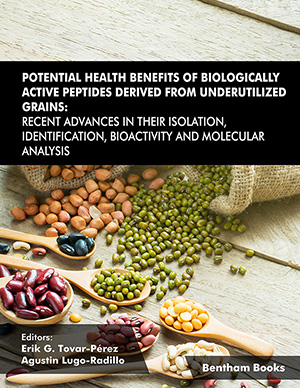Abstract
Dietary proteins and peptides can exert a wide variety of well-studied
bioactivities, some of which are related to human well-being, health maintenance and
disease prevention. These peptides can be generated by enzymatic hydrolysis,
gastrointestinal simulation, or by fermentation with microorganisms. Quinoa is a
pseudo cereal consumed by ancient populations for hundreds of years. It does not
contain gluten, but it does contain proteins with encrypted sequences that can be
released by enzymatic hydrolysis. These sequences contained in quinoa hydrolysates
and peptides can exert beneficial effects on health, as they present antidiabetic,
antihypertensive, antioxidant, anticancer and anti-inflammatory activities, among
others. In addition, quinoa has other nutritional and bioactive compounds such as
flavonoids, phenolic acids, fatty acids, vitamins and minerals. There are many studies
that demonstrate the activities mentioned above, however, the exploration of in vivo
models explaining the associated mechanisms are still needed. This chapter aims to
understand quinoa from a functional point of view, along with presenting the
biotechnological potential of grain proteins, which is currently very poorly exploited.
We aim to promote quinoa cultivation, since its beneficial properties are adequate for
its use in the prevention of chronic-degenerative diseases.
Keywords: Albumins, Antidiabetic, Antihypertensive, Antiinflammatory, Antioxidant, Bioactive peptides, Enzymatic hydrolysates, Globulins, Glutelins, Hypolipidemic, Prolamins, Pseudocereals, Quinoa, Seed storage proteins, Solubility.






















